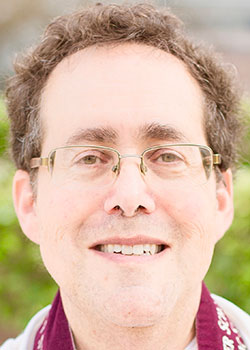When we think about the mitzvot of Judaism, most of us are inclined to think first of the ritual commandments. The image of a religious Jew is of someone wearing tallit and tefillin, or of lighting Shabbat candles. We might think, additionally, of hosting a Passover Seder, or perhaps of blowing the Shofar on Rosh Ha-Shanah and at the close of Yom Kippur. These mitzvot, known as bein adam la-Makombetween a person and God, are important components of a religious Jewish life indeed. But no less commanded, and by no means less important, are the mitzvot bein adam le-havero, the interpersonal or ethical commandments. The realm of ethics, from a Jewish perspective, is an essential branch of religion. One can be an ethical person without being religious, but one cannot be a truly religious Jew without being ethical.
Today’s Torah portion contains one such ethical commandment that is often ignored even among the strictly pious. In Parashat Ki Tetze, God commands us “When you build a new house, you shall make a parapet (ma’akeh) for your roof, so that you do not bring bloodguilt on your house if anyone should fall from it.” This rule, from early on in Jewish history, was understood to pertain to more than just how we prevent people from falling off our buildings. Echoing the ancient midrash Sifrei, Maimonides writes in his Sefer ha-Mitzvot that this commandment also mandates us “to remove any obstacles and traps from all your property and to build a railing around all roofs, ditches or holes and their like, so that no one can fall into them and get injured. We must also make sure to remove all other hazardous objects that we might control.”
A clue to how the Rambam viewed this practical mitzvah emerges from his masterful summary of the entire Oral Torah, the Mishneh Torah. He explicates this commandment in the section pertaining to “the Laws of the Murderer and the Preservation of Life.” For Maimonides, then, at issue is the preservation of human life. Safety is a religious obligation, and negligence is not merely a crime, it’s a sin. As Rambam reads this law, the Torah orders us to assure the well-being and health of those around us. Beyond merely telling us not to harm directly, we are responsible for assuring that people can’t easily be harmed by the property under our control.
What an interesting proposition: a religious Jew is not only one who is punctilious in performing the required rituals of our faith, but is one who understands the safety of other people as a divine obligation. How far removed such a thought is from our sanitized notion of religion as private faith or quaint ritual! The Torah doesn’t countenance being restricted to the study hall or the synagogue. Instead, concerned with the fullness of life as it is lived, intent on bringing the healing touch of holiness to every aspect of human living.
A God who can be partitioned off from human life is no God at all. A religion that speaks only in the sanctuary might as well say nothing. Far from being just a “faith” or a “religion,” Judaism offers a way of living life that brings a sacred perspective to bear on all human activities.
Seen in that light, how we provide for each other is indeed a Jewish matter. That we might allow a potential danger to threaten another person is a betrayal of Judaism’s most fundamental teaching: that we are, each of us, made in God’s image, and that all people are deserving of God’s love, and of ours as well. Given the commitment of the God of Israel to liberate slaves, given the way our God insists on “one law for you and for the stranger who is in our midst” and tells us to “pursue justice,” it must come as no surprise that the service of this God finds its loftiest expression in assuring the health and safety of the other members of our community.
What are the ways in which we don’t attend to the health and well-being of other people. In what ways does our inattentiveness to possible harm betray an indifference to each other and to our shared Creator?
A religious Jew is called “observant.” Perhaps we need to open our eyes, to observe the ways in which we can take better care of each other and assure each other’s health and safety more completely. When we look out for each other, then our observance is something beautiful to behold.
Shabbat shalom. And take care.
************************************************************************
Rabbi Bradley Shavit Artson is the Dean of the Ziegler School of Rabbinic Studies at the University of Judaism in Los Angeles, a rabbinical school for the heart, mind and soul. He is the author of The Bedside Torah: Wisdom, Dreams, & Visions (McGraw Hill).

